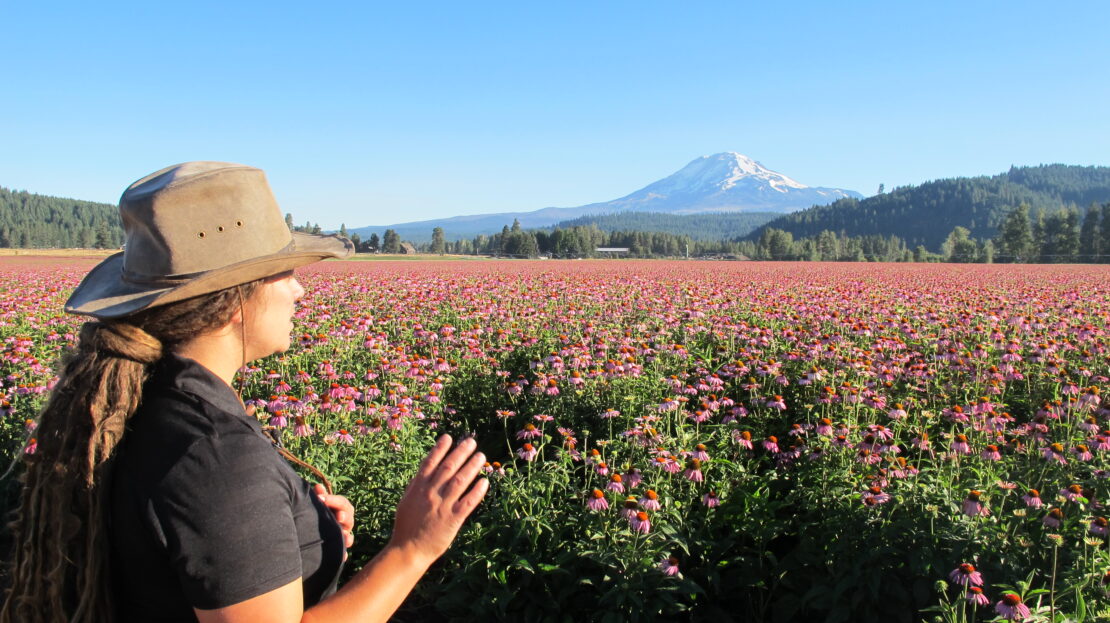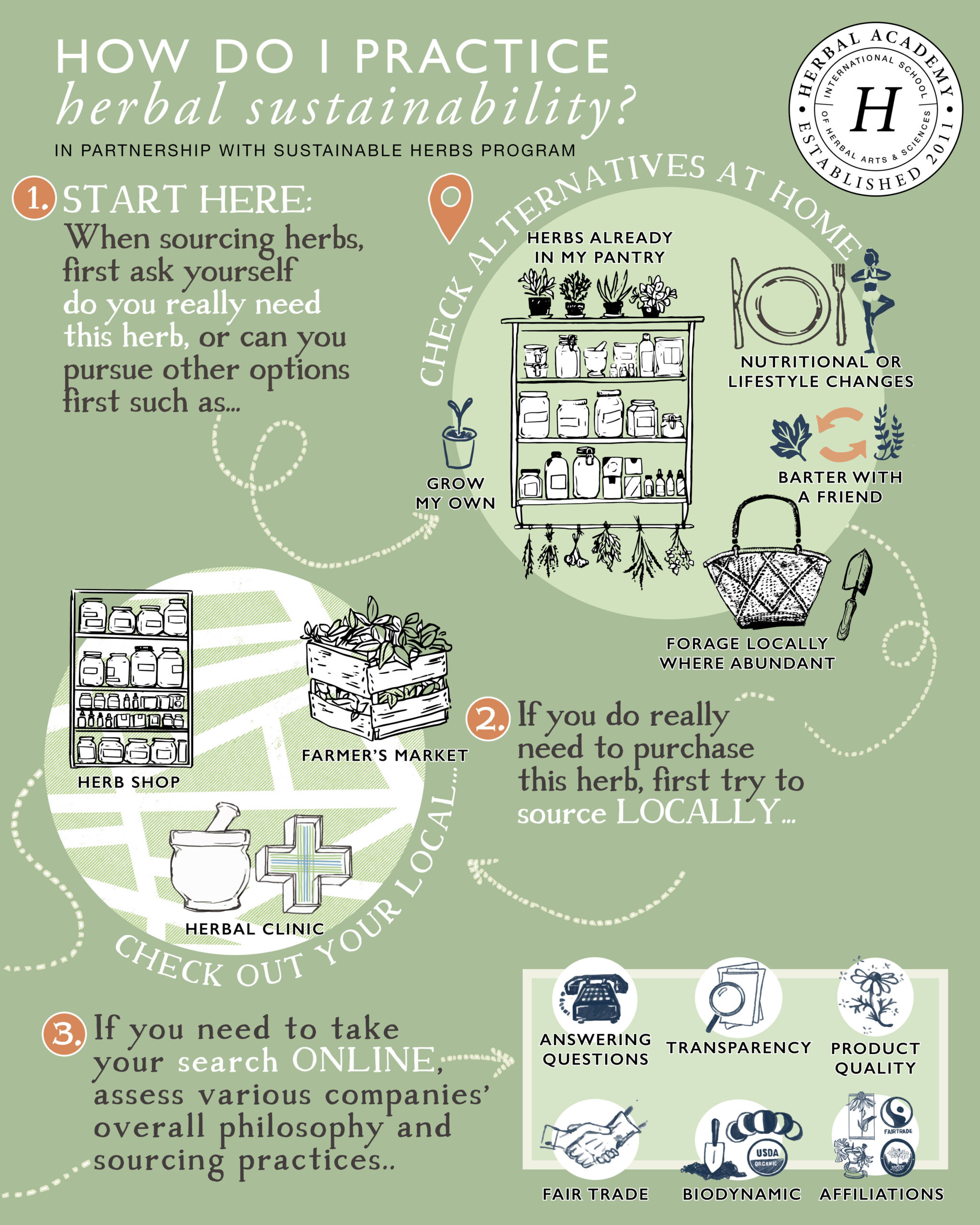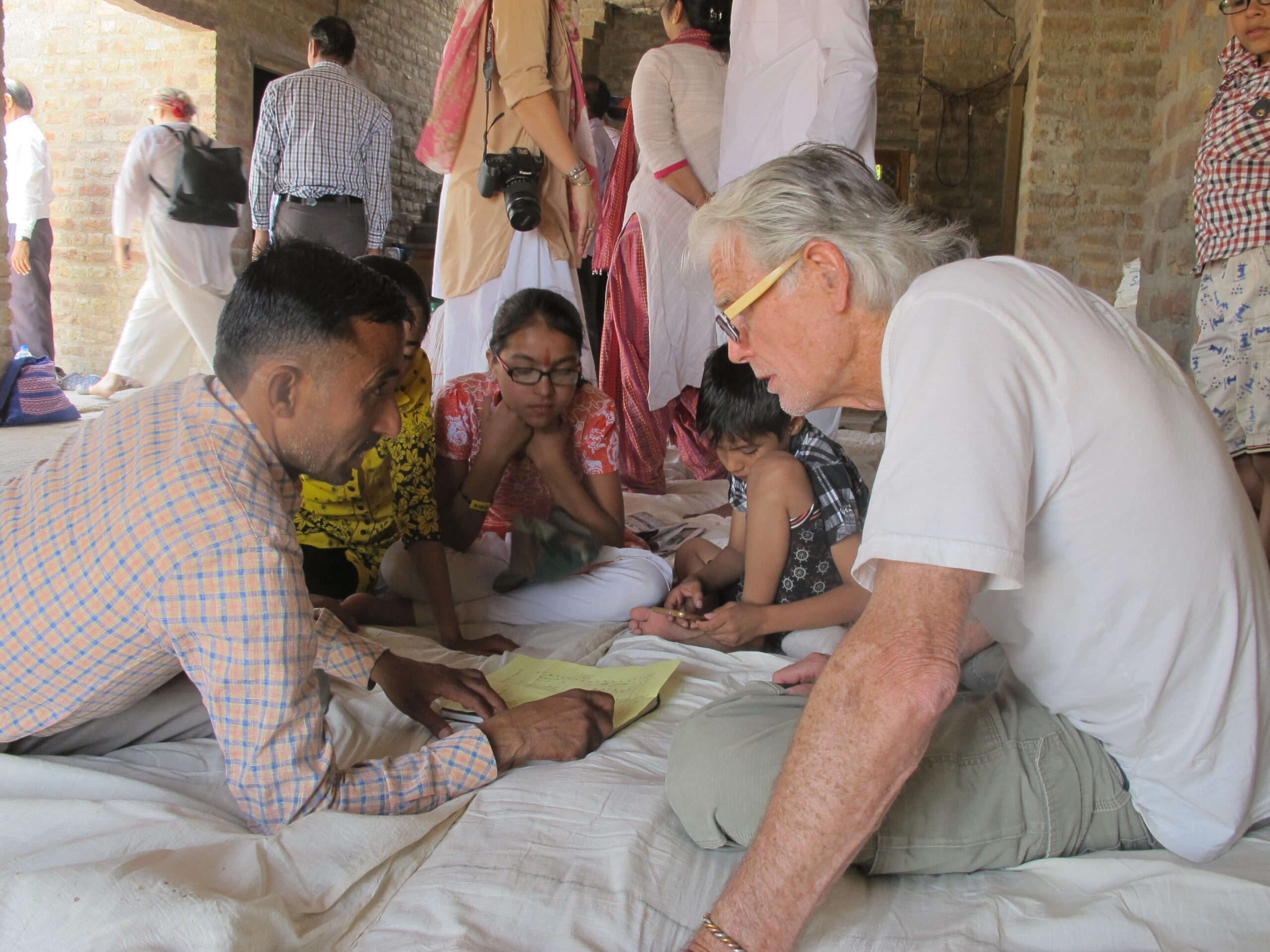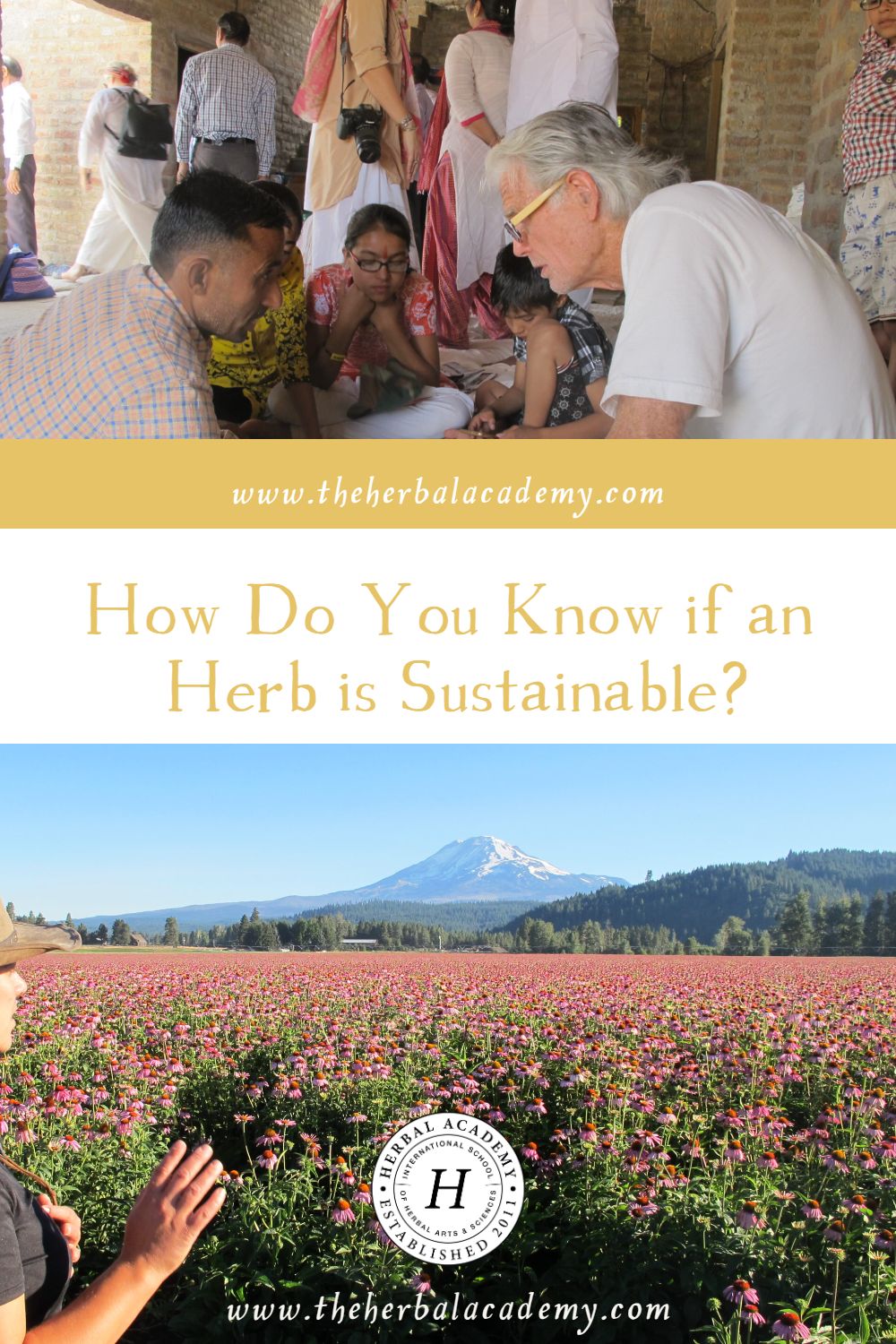
How Do You Know if an Herb is Sustainable?
In our new Sustainable Herbal Supply Chain Intensive available in The Herbarium, you’ll learn how to discern quality herbs and understand their place, and yours, in the functional supply chain. This excerpt from the Intensive sheds light on what makes an herb high quality and how the global supply chain influences the quality of an herb. In this intensive, Herbal Academy partners with the Sustainable Herbs Program to bring you an in-depth understanding of integrity in sustainable practices within the herbal supply chain, from your local bioregion all the way to a global scale.
The Intensive was crafted to showcase the significant efforts of the Sustainable Herbs Program (SHP), spearheaded by Ann Armbrecht, PhD. Ann began this initiative in 2015 with a fundraising campaign aimed at illuminating the stories of the individuals and plants integral to the production of herbal products. Her dedication earned her the prestigious 2017 Fulbright-Nehru Scholarship for her extensive documentation of the herb supply chain in India.
Through her groundbreaking work, both with the SHP and her book The Business of Botanicals: Exploring the Healing Promise of Plant Medicines in a Global Industry, Ann has shed light on the intricacies of the herbal industry and the interconnectedness of people and plants.
It’s important to ask yourself questions as a consumer, clinician, and/or herbal teacher to help steer your own herbal consumption toward sustainable practices. Check out the graphic below to get started, and find the entire 3-part downloadable graphic in The Herbarium to help you think through ways to incorporate sustainability in every step of your herbal practice.

How Do I Know if an Herb is Sustainably Produced?
Numerous criteria distinguish sustainable herbs. First, sustainable herbs are characterized by their safety, efficacy, and affordability. Sustainable herbs are also cultivated using regenerative techniques, ensuring the preservation of biological diversity and the enhancement of ecosystem well-being wherever they are grown. Lastly, sustainably cultivated or wild-harvested herbs ideally contribute to the economic prosperity of their local origin. It’s essential that farmers and wildcrafters receive fair compensation for their labor, enabling them to maintain stable incomes and support their communities economically.
In this video shared by the Sustainable Herbs Program, industry leaders Randy Buresh of Oregon’s Wild Harvest and Ben Heron of Pukka Herbs share their insights on the basic principles of sustainable herbalism: understanding where your herbs come from, being confident in their quality, and putting conscious consumerism into action.
Quality and sustainability go hand in hand. Working together to protect specific areas and cultivate others takes care of the community as a whole and produces higher quality herbs and healthier people, as seen in this brief example involving the production of senna (Cassia angustifolia [syn. S. alexandrina]) in India.
Caring for the Whole
Reprinted with permission of Ann Armbrecht.
While in India as a Fulbright scholar, Ann visited projects initiated by the Traditional Medicinals Foundation to support the communities where they source organic senna for their Smooth Move tea. Ann had seen many projects where organizations claimed to be doing more than in fact they are doing and she didn’t have very high expectations. She discovered exactly the opposite. Through the Revive Project and WomenServe, the TMF projects were some of the most inspiring she saw in India.
The Traditional Medicinals Foundation’s approach is based on the recognition that community resilience leads to a more sustainable supply chain. Women farmers who have to walk 8-10 hours a day to carry water, as is the case in the villages that supply much of the world’s senna supply, are not going to help produce the highest quality senna. By helping to dig wells, improving the traditional water supplies, building schools, helping girls go to school – improving the overall livelihood of the communities where Traditional Medicinals the company sources organic senna, the Foundation helps ensure the sustainability of these communities. This, in turn, ensures the sustainability of the supply chain.
Not only that, they have improved the quality of the senna sourced from these communities. This means less raw material is needed to produce the same effect in the finished product. Which in turn means that less raw material needs to be stored, shipped, and processed which lowers the cost of production. And so Traditional Medicinals can in turn pay more to the farmers at the bottom of the supply chain without increasing the price of the finished product.
The Traditional Medicinals Foundation is not doing these projects to do social work on the side to ease their conscience of doing business in these communities. Not only are they investing in the social structure of the communities where they work because it is the right thing to do. They support these communities as a means of risk mitigation and because it makes good business sense. Together TMF and Traditional Medicinals are demonstrating how paying attention to the people and plants along the supply chain produces higher quality products and reduces costs overall. Their approach has the potential to revolutionize the way the herb industry works with its supply chain and to develop a new paradigm of how business is done.

Learn More
Ready to learn more? If you’re already a member of The Herbarium, you can log in for immediate access to the Herbal Supply Chain Intensive, where you’ll find an in-depth discussion of this topic packed with insights from thought leader Dr. Ann Armbrecht, including:
Session 1 Herbal Sustainability and Quality: We explore what sustainable herbs are, where they come from, and how to assess their quality. What impact does pollution and water or soil contamination have on the supply chain? How do you assess what your role is in the supply chain and how to make it more sustainable?
Session 2 Relationships Through the Supply Chain: Why are the relationships between those involved in the supply chain so important? We learn why paying attention to the numerous parts of the supply chain is instrumental to caring for the whole.
Session 3 Place-Based Case Studies: We go into the field to travel to vastly different landscapes all over the world to learn from various methods of sustainable herb management. From Costa Rica to Appalachia to Oregon to India, you will gain an international perspective on what is possible in the herbal supply chain.
The three sessions in this Intensive, each offering valuable lessons in sustainability and herb quality, include videos developed by the Sustainable Herbs Program. Excerpts from “The Business of Botanicals” are incorporated to provide further insight into the subject matter.
Not a member yet? Get access today with a 3-day trial for only $3!
The Herbarium is our ever-expanding, illuminating virtual collection of over 200 (and counting!) searchable herbal monographs, topic-specific intensives, and numerous articles, videos, ebooks, and helpful downloadable resources. Members also gain instant access to several other intensives on popular topics, such as The Sustainable Herbalism Intensive and A Holistic Approach to Fertility. The Herbarium is crafted to help you learn and grow in your herbal journey!
Learn more and sign up for The Herbarium here.








